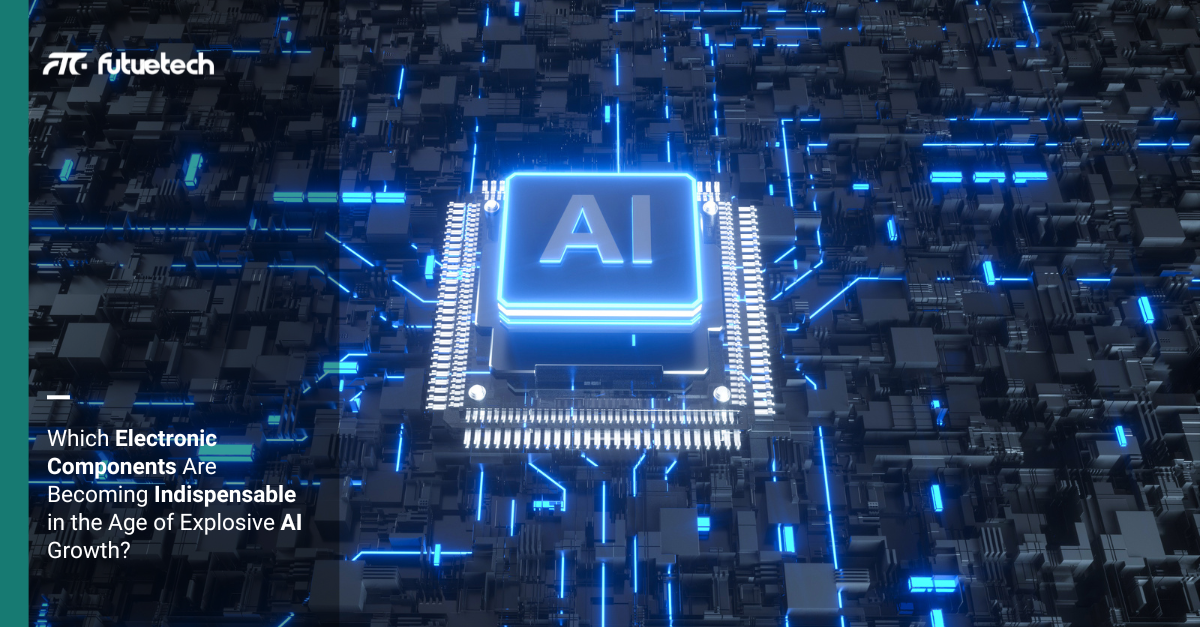As artificial intelligence (AI) continues to transform industries—from autonomous vehicles and smart factories to edge computing and generative AI applications—the backbone of these innovations lies in high-performance, reliable electronic components. The global push for more intelligent systems has significantly increased the demand for advanced semiconductors, power management ICs, memory, high-speed interconnects, and discrete components. In this article, we explore how AI-driven advancements are elevating the strategic value of certain key components and highlight critical models shaping this transformation.
1. Processing Units: Driving AI Workloads
AI applications require intense computational power, making GPUs, ASICs, and FPGAs foundational. For instance:
● NVIDIA A100 Tensor Core GPU – A staple in AI training infrastructure, offering up to 20x performance gains over its predecessors.
● Xilinx Virtex UltraScale+ VU9P – A leading FPGA for real-time AI inference and adaptable workloads.
● Intel Stratix 10 GX – Delivers exceptional bandwidth for accelerating deep learning tasks in data centers.
2. High-Speed Memory and Storage
The massive data throughput in AI systems places memory performance under the spotlight. Key components include:
● Micron MT40A512M16LY-075E – DDR4 SDRAM offering the necessary speed and bandwidth for AI model training.
● Samsung K4A8G165WB-BCRC – A high-performance DRAM optimized for AI computing modules.
● SK hynix HBM2E (High Bandwidth Memory) – Used in AI accelerators to manage parallel data access at ultra-fast speeds.
3. Power Management ICs (PMICs)
With power efficiency a critical concern in AI hardware, PMICs ensure stable and scalable power delivery:
● Texas Instruments TPS62840 – A highly efficient buck converter ideal for edge AI devices and sensors.
● Analog Devices LTC3887 – Offers digital power system management for complex FPGA and GPU arrays.
● Maxim Integrated MAX77860 – A USB-C compliant PMIC supporting compact AI devices and mobile inference engines.
4. Interconnects & Signal Integrity
As data rates increase, ensuring low-latency, high-integrity transmission between components is essential:
● Molex QSFP-DD Interconnect Solutions – Supports 400Gbps and 800Gbps AI server links.
● Amphenol High-Speed Board-to-Board Connectors – Designed for AI processors and memory modules.
● Diodes PI3EQX1004E – A USB/PCIe signal redriver enabling AI edge device miniaturization and signal clarity.
5. Discrete & Passive Components
Supporting AI systems also requires rugged, precision passive components:
● Murata GRM series MLCCs – For decoupling in high-frequency AI processing boards.
● Vishay IRF740PBF – A power MOSFET commonly used in AI server PSU designs for its robust switching characteristics.
● ON Semiconductor MMBT2222A – A general-purpose transistor offering reliability in signal amplification for control systems.
Conclusion: A Strategic Imperative
The rise of AI is not just a software revolution—it’s an electronics one. The seamless performance of AI models depends heavily on the quality, compatibility, and availability of key electronic components. As AI scales into edge applications, wearables, industrial robotics, and more, the importance of strategic component sourcing and design-in support will only grow.
Futuretech Components remains committed to empowering innovation by delivering high-quality, authorized distribution of critical components—including the GPUs, FPGAs, memory ICs, PMICs, and passive components powering the AI future. Our global sourcing network and professional support ensure timely delivery and technical reliability for your next AI breakthrough.


